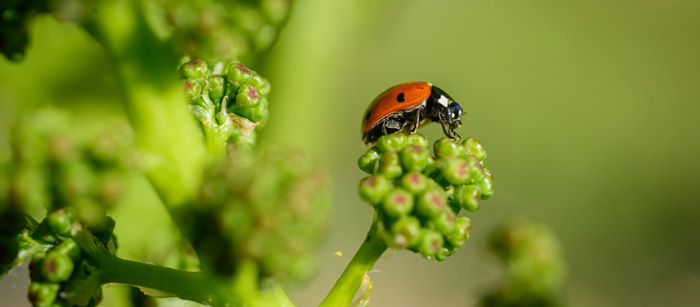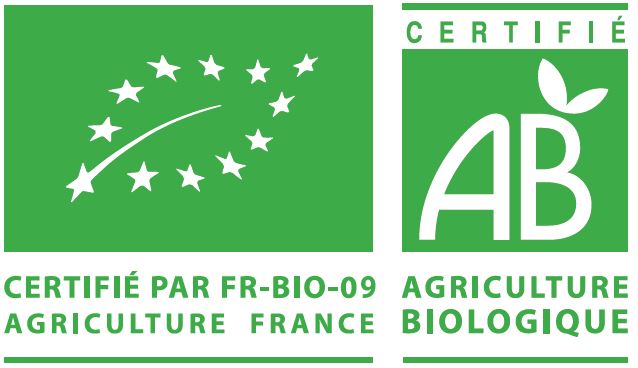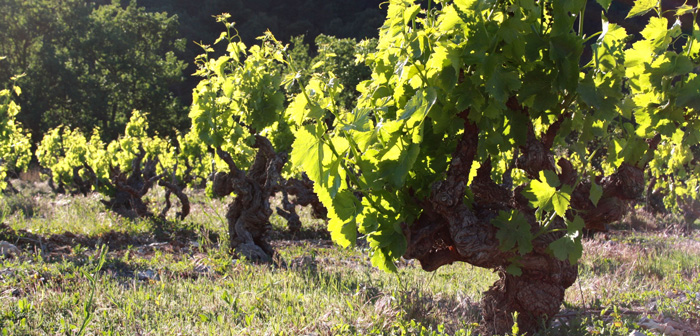In vines
We are fully committed to respecting the terroirs, landscape and traditional grapes varieties

Welcome to the heart of a preserved ecosystem where old vines, garrigue scrubland and holm oaks have lived side by side for many years.

To preserve carefully our old vines

Since the 2023 vintage, our IGP Viognier Clairette and AOC Gigondas wines are certified organic.

Maintaining and Sustaining the Vineyard
Since 2019, plantation work has been underway on the heights of our vineyard.
Planted in the 1950s, the oldest part of our Gigondas vineyard requires restructuring in some areas. The highest plots of the estate located at 500 meters altitude and composed of Syrah, are particularly affected. Every year since 2019, we undertake uprooting and planting in small clusters.
In 2023, we conducted trials of “in-place grafting.” This technique involves initially planting the rootstock and then inserting the scion one or two years later. The main advantage of this type of grafting is to benefit from a functional root system, allowing for earlier and more vigorous grape production.
In 2024, 1.63 hectares of Cinsault from mass selection were added to the grape varieties. Since March 2023 and the new appellation decree, Cinsault becomes in Gigondas a complementary grape variety like Syrah and Mourvèdre. This approach is a desire of Gigondas winemakers because Cinsault offers the advantage of being drought-resistant in a context of climate change. It should therefore thrive on this high-altitude (475 m) plot on north-facing slopes, with a dry and arid limestone soil. However, it will still be necessary to wait for its 4th year to harvest its fruits and see its potential expressed.
Concerned about the quality and originality of our vineyard, we have made mass selections for our future plantations. Instead of buying young vine plants, we chose our scions by cutting shoots from the beautiful vines of the estate. This technique allows us to preserve the genetic diversity of the vineyard and thus the quality of our production. It is particularly interesting because our estate has very old vines well adapted to our terroir, which constitute a viticultural plant heritage to be preserved.










